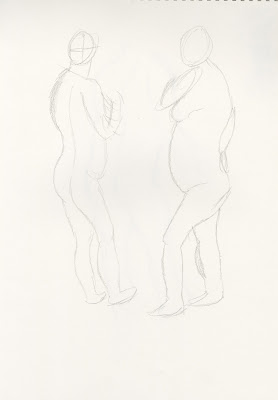This is the Landscape Drawing in Hebden Bridge drawn in oil pastels. The theory of landscape is that you need to find a good perspective and then chose a focal point with some good composition. This drawing's focal point is the boat and it is within the rule of thirds. This drawing is interesting because it uses a blend of oil pastels together to form new colors to make it look impressionistic and abstract which complements the drawing nicely. The artist had used this method on the bridge because there were two colors that he wanted to blend to make a nice texture which were black and and pale brown. There is some good composition in the drawing and there is a nice use of an implied line involved in the drawing as well. The implied line goes from the trees to the boat to the bridge and then to the foot path which is interesting because it redirects the eyes across the page. In addition, there are some blended colors to represent the reflection of the boat in the water which works really well together. Furthermore, it was raining on that day which helped the artist blend the colors really well with the rain.
In conclusion, this is a very successful drawing which has excellent composition, uses the rule of thirds, implied line and experiments and blends in other colors to create a successful drawing. Good Job.


















